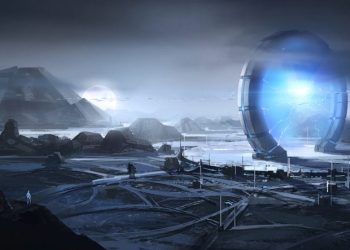Stonehenge, a prehistoric monument in England, captivates the imagination like few other ancient sites. Its massive stones, set in concentric circles, have stood the test of time, drawing visitors from around the world. However, Stonehenge is not just an architectural wonder; it is also a focal point for unexplained phenomena. The area is notorious for strange lights and UFO sightings, leading many to speculate about its connection to otherworldly activities. These mysteries add layers to Stonehenge’s nature, making it a subject of both scientific study and paranormal interest. The site’s enigmatic presence has fueled countless theories about its original purpose, ranging from astronomical observatory to spiritual temple, yet its true function remains a matter of debate. Then again, I guess this is what makes Stonehenge such an extraordinary site.
From Druids to Distant Ancestors
Historically, Stonehenge has been linked to the Druids, the priestly class known for their profound connection to nature and the spiritual world. However, archaeological findings indicate that Stonehenge predates the Druids’ arrival in Britain by several millennia. Intriguingly, recent genetic studies suggest a possible link between the builders of Stonehenge and ancient populations in present-day Anatolia, notably the region that gave rise to Göbekli Tepe, another enigmatic megalithic site. This connection raises fascinating questions about the migration and exchange of cultural and architectural practices among ancient civilizations, suggesting that the prehistoric inhabitants of Britain may have been part of a much larger, interconnected world.
Göbekli Tepe the Source of All Megalithic Monuments Including Stonehenge?
Piecing Together Stonehenge’s Construction
So, how was Stonehenge built? The construction of Stonehenge is an enduring mystery of engineering. The original bluestones, weighing up to four tons each, were sourced from the Preseli Mountains, over 120 miles away. The transportation of these stones to Salisbury Plain is a subject of ongoing research and debate. While the prevailing theory involves the use of wooden sledges and rollers, along with rafts for river transport, the logistics of such an operation in the Neolithic era boggle the mind. The effort and precision required to move and erect these stones suggest that Stonehenge was of significant importance to its builders, a monument with a purpose that warranted extraordinary effort.
A Superstructure
Recent archaeological research has revealed that Stonehenge was only a part of a much larger sacred landscape. This superstructure included multiple rings of stones and possibly wooden posts, constructed over a period exceeding a thousand years. The discovery of the Aubrey Holes, a series of pits outside the main stone circle, and the surrounding henge – a circular ditch and bank – indicate that Stonehenge underwent several phases of construction and modification. This evolving nature of the site suggests a deep-seated cultural and religious significance, evolving with the society that built it. Understanding Stonehenge as part of a larger complex challenges our perception of the societal and technological capabilities of Neolithic people.
Stonehenge in the Context of Ancient Wonders
The expanded understanding of Stonehenge as part of a superstructure invites comparisons with other ancient monumental sites. Similarities in construction techniques and astronomical alignments are seen in structures across the globe, from the pyramids of Egypt to the stone terraces of Machu Picchu. These parallels raise the possibility of a more sophisticated and connected prehistoric world than previously thought. Stonehenge’s place within this global context suggests that the ancient peoples of Britain might have been part of a larger tradition of monument-building that spanned continents and cultures.
The mystery of Stonehenge, a symbol of ancient human achievement, continues to captivate the world. Its massive stones, aligned with precision and constructed with skill, stand as proof of a bygone era’s ingenuity and spirituality. As ongoing research sheds light on its construction and purpose, Stonehenge remains a profound reminder of our shared human heritage, bridging the gap between the past and the present.











